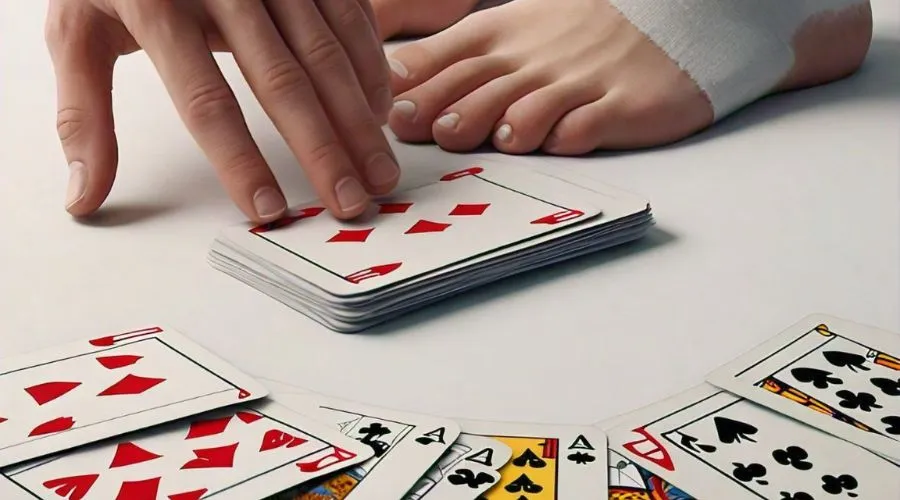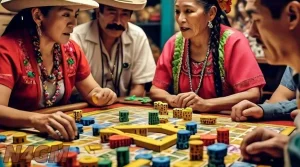If you’ve ever felt lost trying to grasp the rules of the Hand Foot card game, you’re certainly not alone. Many players are frustrated by the game’s complex scoring and tricky setup.
Terms like “foot,” “meld,” and “books” add to the confusion. Variations in gameplay rules between groups make it hard to know the “official” version. For beginners, managing multiple decks and turns can be stressful. It can ruin a fun game.
This Beginner’s Guide to Hand and Foot will remove the guesswork. It will make gameplay a breeze. Inside, you’ll find setup instructions, a scoring breakdown, and strategies. They will help you master the basics and elevate your game to a competitive level.
This guide covers everything you need. Whether you want Simplified Rules or Winning Tactics, it will make you confident and skilled, ready to enjoy every round.
Origins Of The Game
The Hand and Foot card game has roots in traditional card games like Canasta and Rummy. It is believed to have originated in the U.S. in the mid-20th century. Its exact beginnings are somewhat murky.
The game blends elements from classic games. It adds unique mechanics to make it distinct. Hand and Foot is often played at family gatherings or parties. It’s a popular choice for those seeking a fun group activity.
The game’s name comes from the two sets of cards each player receives: the “hand” (the first set) and the “foot” (the second set). Players must first play all their cards from their hands before moving on to their feet.
Rules And Gameplay Of Hand Foot Card Game
1. Key Terms To Know
- Hand: The initial set of cards dealt to each player.
- Foot: A second set of cards that players use after they’ve played through their hand.
- Meld: A set of matching cards laid down to earn points.
- Book: A completed set of seven matching cards (either clean or dirty).
2. Number Of Players
Hand Foot can be played with 2 to 6 players. It is most enjoyed with 4 players split into 2 teams. This format encourages teamwork and strategy.
3. Equipment Needed
To play Hand Foot, you will need:
- Five decks of standard playing cards, including jokers (totaling 270 cards).
- A flat surface for gameplay.
- A score sheet to keep track of points.
4. Setup
- Deal Cards: Each player is dealt two sets of cards:
- The first set is called the hand, consisting of 11 cards.
- The second set is called the foot, also composed of 11 cards but kept face down until all cards in hand are played.
- Stockpile and Discard Pile: The remaining cards form a stockpile in the center of the table. Flip over the top card to start a discard pile. If this card is a red three or a wild card (Joker or 2), it goes back into the stockpile, and another card is drawn.
- Red Threes: If a player draws a red three, they must place it face up on the table and draw another card from the stockpile.
5. Objective
The main goal of Hand Foot is to be the first team to get rid of all your cards by forming melds. A meld consists of three or more cards of the same rank laid out on the table.
Gameplay Mechanics
1. Taking Turns
- Draw Phase: At the start of each turn, players draw two cards from either the stockpile or the discard pile.
- Melding Cards: After drawing, players can meld by laying down sets of three or more cards of the same rank. Wild cards can be used in melds but cannot outnumber natural cards.
- Discard Phase: Players end their turn by discarding one card onto the discard pile.
2. Going Out
Players can only go out when they have played all their hand cards and have melded at least:
- Two dirty books (melds that include wild cards).
- Two clean books (melds without wild cards).
- One wild book (a meld that includes wild cards).
Once a player goes out, they must notify their partner. The partner must have picked up their foot stack before going out.
3. Scoring System
Scoring in Hand Foot can be complex but is essential for determining winners:
- Card Values:
- Jokers (wild cards): 50 points
- Red threes: 100 points each
- Aces: 20 points
- Kings through Eights: 10 points
- Fours through Sevens: 5 points
- Black threes: 5 points (used to block discard piles)
- Bonus Points:
- Going out earns an additional 100 points.
- Teams score points based on their melds while deducting points for any remaining unplayed cards at the end of each round.
- Rounds: The game typically consists of four rounds with increasing minimum meld requirements:
- Round 1: The minimum meld requirement is 50 points.
- Round 2: The minimum meld requirement is 90 points.
- Round 3: The minimum meld requirement is 120 points.
- Round 4: The minimum meld requirement is 150 points.
Strategies For Winning
- Melding Early: Try to lay down your initial meld as soon as possible to get into play effectively.
- Use Wild Cards Wisely: Save wild cards for key moments. Use them to complete a meld or block an opponent’s strategy.
- Keep Track of Discards: Watch what your opponents discard. It can clue you in to their hands.
- Manage Your Foot: Don’t rush into it too quickly. Ensure you have enough melds before switching from hand to foot.
- Communication with Partner: If playing with partners, discuss your strategy. But, don’t reveal too much about your hand.
Common Variations In Hand And Foot Rules
There are several popular variations that may change the gameplay.
Here are some examples:
- Additional Cards for Foot: Some groups play with 13 or 15 cards in the foot instead of 11.
- Wild Card Limitations: Some versions allow only one or two wild cards per meld.
- Scoring Adjustments: Different groups may award different points for specific melds and books.
FAQs
The game is called Hand and Foot because each player has two separate piles of cards—a “hand” and a “foot.” The hand is used first, and once it’s emptied, players move on to the foot.
Q2. What Happens If You Run Out of Cards?
If the draw pile runs out, players can continue playing with what’s in their hand and foot piles. Some groups reshuffle the discard pile to form a new draw pile.
Q3. Is There an Official Set of Rules for Hand and Foot?
Due to its origins as a social game, there’s no single set of official rules for Hand and Foot. Variations are common, and house rules are widely accepted.
Conclusion
The Hand Foot card game is a favorite among card fans. It mixes strategy, teamwork, and excitement. With its rich history and fun gameplay, this game is a staple at gatherings.
By learning its rules and strategies, you can improve your skills and enjoy every round. Hand Foot is fun, whether you play casually or competitively. Master it to enjoy endless fun with your friends!







